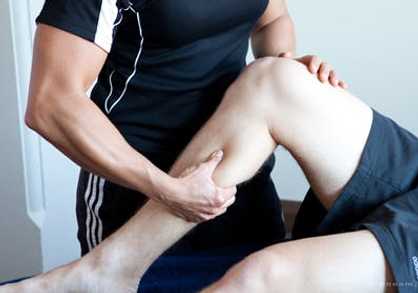20 Tips For Long Distance Running
April 8th 2020
Although short distance running benefits your health, long distance running is an especially great way to improve your fitness and relieve stress. According to health experts, frequent long distance runners enjoy strengthened cardiovascular health, low cholesterol, lower blood pressure, great self-esteem, and revamped metabolism.
One important prerequisite to becoming a long distance runner is to build up to it. For those with less practice, there are steps you can take to make the transition to long distance running. For experienced runners, it is still important to pace yourself when running long distances. As your level of fitness and endurance grows, your body will allow you to cover longer distances with better form and higher efficiency.
At SportMe, we are committed to personalized training for safe and purposeful exercise with our customizable app. In preparation for an optimized training routine, get to know your body with our 20 helpful tips for long distance running!
Related: You Just Conquered a Marathon, What Now?
1. Use the right gear
It may sound obvious, but long distance running requires that you be properly clad. This can mean several forms of attire depending on the weather and time of day that you prefer to run. In hot weather, dressing down in light loose shorts and a loose top prevents excess sweat from sticking to your body. A head band is also a good idea, since it prevents sweat from trickling down into your eyes.
In cold weather, runners sweat less.Tights and woolen head gear can provide the needed protection from the chill and prevent excessive loss of body heat. Dressing warmly is vital to prevent injuries.
2. Get durable sneakers

Photo by Alexander Redl on Unsplash
Long distance running is challenging enough; the last thing you need is your footwear holding you back. Because you’ll be on your feet the entire time, it’s essential to get comfortable sneakers that can go the distance. Stopping a run halfway because you have blisters ruins the flow of the workout and impacts your stamina and momentum negatively. Improper support can lead to long term damage.
In addition to comfortable shoes, donning an extra pair of good athletic socks can provide an additional layer of much needed comfort during a run.
3. Have a well-tailored training plan
Long distance running quickly becomes a lifestyle. The training involved should match one’s level of fitness and it is important to set challenging, but reachable goals. The rule of thumb should always be to gradually build strength, endurance and cardio.
Achieving this requires a regular balance of long runs during the week and adequate rest. Lifting a bit of weights can complement the cardio and boost one’s overall fitness level as well. With SportMe, you can consult with RRCA-certified running coaches to create a plan that’s specific tailored to you. They will help make sure you push yourself while setting limits for your body.
4. Eat healthy

Photo by RitaE on Pixabay
Any sport requires nutritious meals and snacks to aid in muscle recovery and overall health. It’s advisable to eat familiar food and beverages before and after training, since trying something new can cause an upset stomach.
This is especially true before running a marathon. Eating healthy and consistently helps to stabilize your body before and after long workouts.
5. Warm up
For any athlete or recreational runner, warming up before a high intensity activity such as long distance running is imperative. A combination of some stretching exercises and a ten minute walk before the run are highly recommended to eliminate chances of muscle pulls and cramps.
6. Cool down

Photo by skeeze on Pixabay
Most people will warm up before a run, but forget to cool down. A cool down is just as important as a warm up. After a long distance run, walking for 10 minutes will help the body cool down and cut your recovery time dramatically.
7. Staying hydrated

Photo by Autri Taheri on Unsplash
Long distance running means perspiration and expelling toxins, but it also removes a good amount of water from the body. The process of hydrating for longer runs should start even before the training session. Make sure to drink plenty of fluids with meals and in between meals. Also consider a drink of water at the middle point of your run, or every 30-45 minutes in runs that last longer than an hour.
After a marathon or long distance run, it’s advisable to not only drink water, but also alkaline rich recovery beverages such as Gatorade.
8. Don't run too soon after having a meal
Having a meal before a run is a crucial step to boosting one's energy level and increasing the chance of a successful long run. However, it is important to wait for at least 3 hours to allow adequate time for digestion.
Not allowing enough time to empty the stomach can lead to stomach discomfort during a run, which can mean anything from bloating and abdominal cramps to vomiting.
9. Pace the run
One mistake long distance runners often make is failing to pace themselves. Pacing the run means understanding for your body’s natural limits. By pushing too hard, too early, you may find yourself unable to finish the distance during a workout or in competition. Keep track of your run with a pace calculator so that you’re aware of your averages and splits.
Developing a knack for pacing is crucial to runners going the distance.
Related: Can’t Run? Think Again
10. Use a timer
Although not everyone is into long distance running for competition, it’s still a good idea to use a timer to help gauge your threshold for a given distance. That information will prove helpful with pacing long distance runs. It will also help you develop effective running plans for future workouts. Our comprehensive running app provides many tools, including workout details with distance and time.
11. Increase the mileage, gradually

Photo by Andrew Tanglao on Unsplash
In long distance running, incremental growth is key. As a rule, increase the weekly mileage by no more than 10%. This approach will reduce the chance of injury as you increase your workout load. Make sure you keep track of your distance so you can be precise.
You increase your chance of injury when you increase your mileage too much, too quickly.
12. Injury prevention
Preventing injuries is crucial for those who take up long distance running. As mentioned above, a warm up before a run and cool down afterwards are good starting points. Paying attention to the body during workouts can help prevent injury.
Most distance runners have learned to pay attention to body pains. If one is having persistent pain during running, it's best to take a few days off and resume training only after the pain is gone. If the pain hasn’t disappeared, seek medical help.
An important takeaway regarding pain is not to run through it. Remember, it is better to have a minor setback than a major setback.
13. Resting after a marathon

Photo by Gregory Pappas on Unsplash
Anyone who runs a marathon understands the toll it takes on the body. As a result, adequate long-term rest is crucial before resuming rigorous training. The general rule for rest and restoration after a long distance running competition should be to allow your body a day of rest for each mile you ran. So if you participated in a 10 mile race, then allow 10 days of rest before getting back into hard training.
If you participated in a full marathon of 26.2 miles, then allow your body 26 to 27 days of recovery before resuming rigorous training.
14. Preparing for a long distance race
Regardless of your fitness level, preparation for a race should be gradual. The whole spectrum of training includes eating well, staying hydrated, and maintaining a training schedule that is incremental in weekly mileage.
Such an approach ensures that you have thoroughly prepared your body for the grueling task of long distance competition. If the intention of taking up long distance running is to eventually run a full marathon, then you need to make sure that you start with ample preparation time in order to avoid injuries and to slowly improve your fitness level.
The aim should be to run at least a 20 mile distance with relative comfort by the time the marathon competition rolls around. When you can run 20 miles, you can run a marathon with less likelihood of injuring yourself or quitting before the finish line.
While there are those who enter a marathon with the aim of making the best time possible, there are also those who participate with the aim of finishing the course irrespective of the time it takes.
Whether you’re a young adult or a senior citizen with hopes of running a marathon one day, the idea is to start small and build slowly.
15. Make your runs interesting

Photo by Chander R on Unsplash
As much as some people love long distance running, covering the same route regularly can quickly become boring and monotonous. To keep things interesting and inspiring, explore other routes.
This doesn’t need to take away from your running focus, and keeping track of your training can help make sure you run the same distance. With a little effort, you’ll quickly discover many routes to explore that you weren’t aware of. For instance, run a route covering one section of the park and part of a neighborhood. And the next day, run the other section.
Fitness levels permitting, trail running is wonderful for the runner who enjoys nature. However, the terrain needs some getting used to, since it involves jumping over stumps, crossing rivers, and running up hill and descents. For more experienced runners, altitude training is a great element to add to your regimen.
For those living close to a beach, running on a beach or coastline is a refreshing experience. Switching up the jogging routes helps keep the scenery fresh and interesting each day, improving the running experience.
16. Alternate hard days of training with rest
Training smart is the key to getting fit and achieving the fitness progress that one desires. There are days that call for heavy training sessions. These days should be followed by long periods of rest.
This approach allows muscle recovery in the body for maximum gain. No need to think of a rest day as slacking off, but rather as a crucial part of the workout process.
17. Altitude training

Photo by David Marcu on Unsplash
Altitude training applies more to competitive athletes than non-competitive athletes. When you train in high altitude (7000 to 8000 feet above sea level or higher) you are breathing thinner air than you would be at 4000 feet. The athlete training on higher ground will build a higher threshold of endurance in comparison to one training at a lower altitude.
If you train at high altitudes and then compete at lower altitudes, you’ll slowly build a competitive edge in endurance over other runners.
18. Break your run into sections
Thinking about long distances before you start your run can be discouraging. Mentally breaking down a long distance run is often the key to get going and keep going.
10km runs can be broken up in your mind into three 3.5km stages. Once one stage is accomplished, the next one doesn’t seem too daunting and by the time you’re through with the second stage, you can make a push to finish the last stage.
19. Train in a group

When taking up long distance running, it may be easier to find a safe group in the area that gets together to do long runs. Even seasoned long distance runners can benefit from running in a local group every so often. It is motivational for beginners and socially uplifting for everyone involved.
20. Be aware of your running posture
When running long distance, you want to minimize the tension on your wrists, hands, and arms. The head should be upright so you can clearly see where you’re headed. Your back should be straight and your breaths should be deep. Your runner’s foot fall should also be straight. Running in the right posture ensures optimal performance for the athlete.
Final Thoughts

Photo by Mārtiņš Zemlickis from Unsplash
Long distance running can be taken up by anyone who is interested in improving their overall fitness level. It’s a great exercise because it’s affordable and accessible to nearly everyone. All you one need is good running gear and the right mentality.
By starting slow and gradually building endurance and strength through some of the tips provided above, you can incrementally increase your fitness level at your own pace safely and in a healthy way. With SportMe, training for long distance running is made easier for both experienced athletes and recreational runners who don’t have a personal trainer. Now, you can join the race at your own pace.
To keep in good shape while at home, try a mobile pushup tracker. Research shows that just 10 minutes a day can improve health and wellness.
Related: How to Avoid Running Injuries







